#ancien greek art
Text

Medusa
#medusa#greek myth#greek mythology#snake#ancien greek art#vase painting#ancient greece#ceramic#ceramic design#greek god#greek goddess#scales#ink#lineart
10 notes
·
View notes
Text
PAN 2023
PAN Amsterdam, the annual art marketin the Dutch capital, is about to open its doors again,. Some 120 art galleries present a great variety of art, design, antiques... and more. So exciting!
Top
English summary : click here
Informations pratiques: cliquez ici
Du 19 au 26 novembre, 120 marchands d’art et d’antiquités ou galéristes seront de nouveau réunis à PAN Amsterdam, où seront aussi représentés certains musées et maisons d’édition. Les participants viennent des Pays-Bas, bien sûr, mais aussi des États-Unis, d’Allemagne, de France, du Royaume-Uni et d’Italie.
On y trouvera…

View On WordPress
#antiquités#antiquités égyptiennes#antiquités romaines#argenterie#art#art ancien#art asiatique#art contemporain#art grec#art market#Art Zéro#asian art#design#Egyptian art#furniture#glass#greek art#meubles#peintures#roman art#sculptures#silver#Verre
0 notes
Text
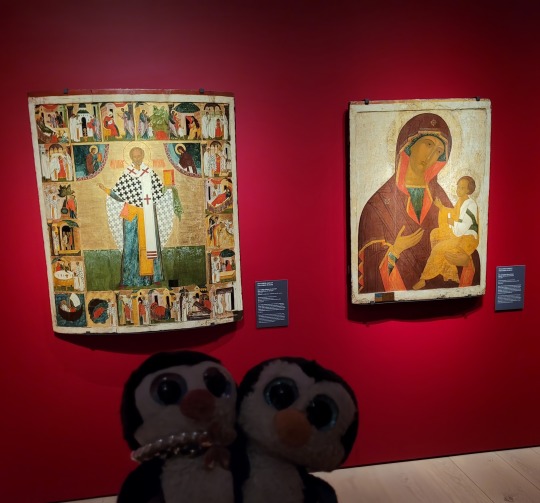
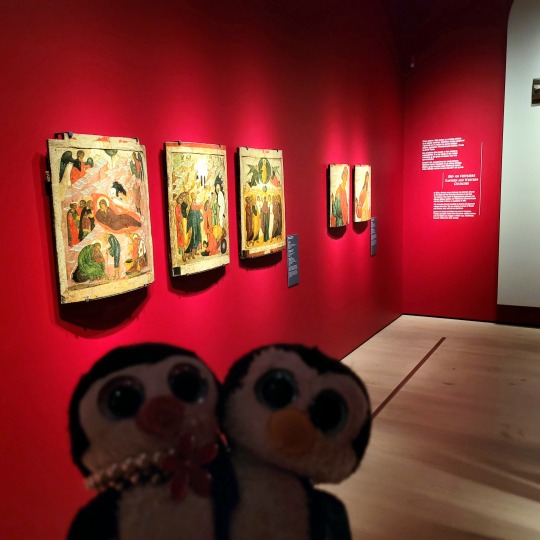

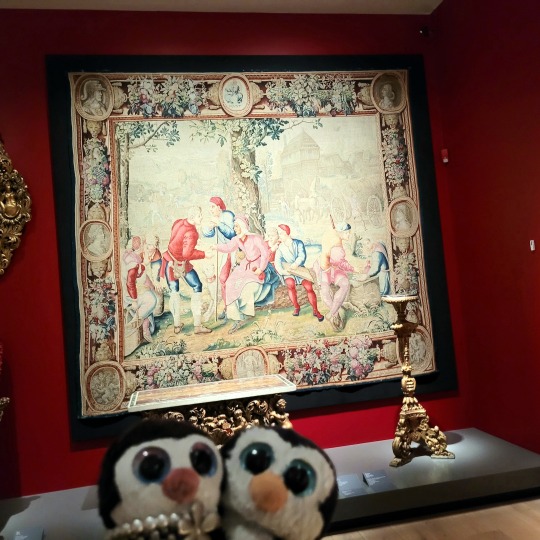


2022/08/09
Seguimos un poco un orden caotico, volvimos a la zona de arte antiguo, para admirar piezas de distintas épocas y otros elementos. Jugamos a los reflejos en un espejo.
We followed a bit of a chaotic order, we returned to the area of ancient art, to admire pieces from different periods and other elements. We play reflections in a mirror.
Google Translation into Portuguese:
Seguimos uma ordem um pouco caótica, voltamos à área da arte antiga, para admirar peças de diferentes épocas e outros elementos. Jogamos reflexos em um espelho.
Google translation into Italian:
Abbiamo seguito un ordine un po' caotico, siamo tornati nell'area dell'arte antica, per ammirare pezzi di epoche diverse e altri elementi. Giochiamo riflessi in uno specchio.
Google Translation into French:
Nous avons suivi un ordre un peu chaotique, nous sommes retournés dans le domaine de l'art ancien, pour admirer des pièces de différentes époques et d'autres éléments. On joue des reflets dans un miroir.
Google Translation into Arabic:
لقد اتبعنا القليل من النظام الفوضوي ، فعدنا إلى منطقة الفن القديم ، لنعجب بقطع من عصور مختلفة وعناصر أخرى. نلعب بالانعكاسات في المرآة.
Google Translation into German:
Wir folgten einer etwas chaotischen Reihenfolge, wir kehrten in den Bereich der antiken Kunst zurück, um Stücke aus verschiedenen Epochen und anderen Elementen zu bewundern. Wir spielen mit Reflexionen in einem Spiegel.
Google Translation into Albanisch:
Pas një rendi disi kaotik, u kthyem në zonën e artit antik për të admiruar pjesë të periudhave të ndryshme dhe elementë të tjerë. Ne luajmë me reflektimet në një pasqyrë.
Google Translation into Bulgarian:
Следвайки донякъде хаотичен ред, ние се върнахме в областта на античното изкуство, за да се полюбуваме на произведения от различни периоди и други елементи. Играем си с отражения в огледало.
Google Translation into Czech:
Po poněkud chaotickém řádu jsme se vrátili do oblasti starověkého umění, abychom obdivovali kousky z různých období a další prvky. Hrajeme si s odrazy v zrcadle.
Google Translation into Slovak:
Po trochu chaotickom poriadku sme sa vrátili do oblasti antického umenia, aby sme obdivovali kúsky z rôznych období a iné prvky. Hráme sa s odrazmi v zrkadle.
Google Translation into Suomi:
Hieman kaoottisen järjestyksen mukaisesti palasimme muinaisen taiteen alueelle ihailemaan eri aikakausien teoksia ja muita elementtejä. Leikimme heijastuksilla peilissä.
Google Translation into Greek:
Ακολουθώντας μια κάπως χαοτική τάξη, επιστρέψαμε στον χώρο της αρχαίας τέχνης για να θαυμάσουμε κομμάτια από διαφορετικές περιόδους και άλλα στοιχεία. Παίζουμε με τις ανταύγειες στον καθρέφτη.
Google Translation into Norwegian:
Etter en noe kaotisk orden vendte vi tilbake til området for gammel kunst for å beundre stykker fra forskjellige perioder og andre elementer. Vi leker med refleksjoner i et speil.
Google Translation into Polish:
Kierując się nieco chaotycznym porządkiem, wróciliśmy na teren sztuki antycznej, by podziwiać dzieła z różnych epok i inne elementy. Bawimy się odbiciami w lustrze.
Google Translation into Romanian:
Urmând o ordine oarecum haotică, ne-am întors în zona artei antice pentru a admira piese din diferite perioade și alte elemente. Ne jucam cu reflexiile intr-o oglinda.
Google Translation into Russian:
Следуя несколько хаотичному порядку, мы вернулись в область древнего искусства, чтобы полюбоваться произведениями разных периодов и другими элементами. Играем с отражениями в зеркале.
Google Translation into Turkish:
Biraz kaotik bir düzenin ardından, farklı dönemlerden ve diğer unsurlardan eserlere hayran olmak için antik sanat alanına döndük. Aynadaki yansımalarla oynuyoruz.
Google Translation into Hebrew:
בעקבות סדר כאוטי משהו, חזרנו לאזור האמנות העתיקה כדי להתפעל מיצירות מתקופות שונות ומאלמנטים אחרים. אנחנו משחקים עם השתקפויות במראה.
Google Translation into Hindi:
कुछ अराजक क्रम के बाद, हम विभिन्न अवधियों और अन्य तत्वों के टुकड़ों की प्रशंसा करने के लिए प्राचीन कला के क्षेत्र में लौट आए। हम दर्पण में प्रतिबिंबों के साथ खेलते हैं।
Google Translation into Indonesian:
Mengikuti tatanan yang agak kacau, kami kembali ke bidang seni kuno untuk mengagumi karya-karya dari periode yang berbeda dan elemen lainnya. Kami bermain dengan refleksi di cermin.
Google Translation into Malay:
Berikutan perintah yang agak huru-hara, kami kembali ke kawasan seni purba untuk mengagumi karya dari zaman yang berbeza dan unsur-unsur lain. Kami bermain dengan pantulan di cermin.
Google Translation into Japanese:
やや混沌とした順序に従って、私たちは古代美術の領域に戻り、さまざまな時代やその他の要素の作品を鑑賞しました。 鏡の反射で遊んでいます。
Google Translation into Korean:
다소 혼란스러운 순서를 따라 우리는 고대 미술의 영역으로 돌아가서 다른 시대의 작품과 다른 요소를 감상했습니다. 우리는 거울에 비친 모습을 가지고 놀아요.
Google Translation into Chinese:
顺着有些混乱的秩序,我们回到了古代艺术区,欣赏不同时期的作品和其他元素。 我们玩镜子里的倒影。
Google Translation into Persian:
به دنبال نظمی تا حدی آشفته، به حوزه هنر باستان بازگشتیم تا آثار دوره های مختلف و عناصر دیگر را تحسین کنیم. ما با بازتاب ها در آینه بازی می کنیم.
Google Translation into Tagalog:
Kasunod ng isang medyo magulong pagkakasunud-sunod, bumalik kami sa lugar ng sinaunang sining upang humanga ang mga piraso mula sa iba't ibang mga panahon at iba pang mga elemento. Naglalaro kami ng reflection sa salamin.
Google Translation into Thai:
ตามระเบียบที่ค่อนข้างวุ่นวาย เรากลับมายังพื้นที่ศิลปะโบราณเพื่อชื่นชมผลงานจากยุคต่างๆ และองค์ประกอบอื่นๆ เราเล่นกับเงาสะท้อนในกระจก
Google Translation into Bengali:
কিছুটা বিশৃঙ্খল আদেশ অনুসরণ করে, আমরা বিভিন্ন সময়কাল এবং অন্যান্য উপাদানের টুকরোগুলির প্রশংসা করার জন্য প্রাচীন শিল্পের অঞ্চলে ফিরে এসেছি। আমরা আয়নায় প্রতিচ্ছবি নিয়ে খেলি।
Google Translation into Ukrainian:
Дотримуючись дещо хаотичного порядку, ми повернулися до області стародавнього мистецтва, щоб помилуватися творами різних періодів та іншими елементами. Граємося з відображенням у дзеркалі.
#Oslo#Noruega#Norway#Downtown#AkerBrygge#National#Museum#NasjonalMuseet#Antique#Art#Piano#Mirrror#Travel#Beauty#CoupleGoals#PositiveVibes#PlushiesOfInstagram#Maharashtra#ペンギン
7 notes
·
View notes
Text

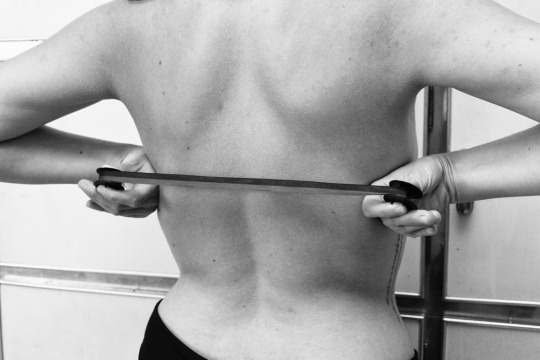
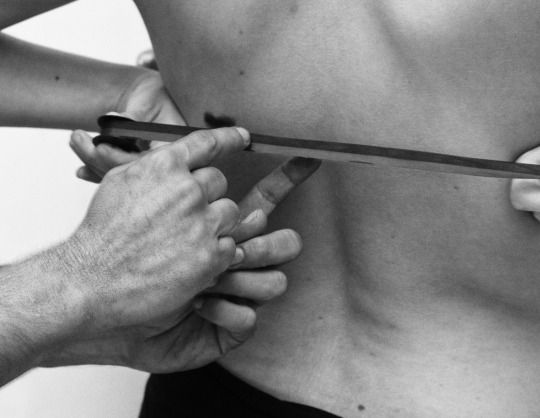


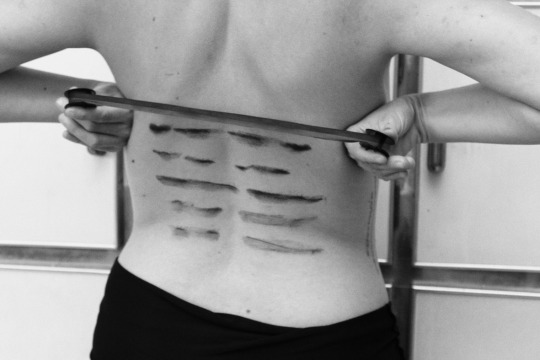
Compito di realtà. Nella versione di Vincenzo “Enzo” Bruno ph. Nastro per macchina da scrivere, corpo, codice morse. Trascrizione della parola “phonè”, dal greco antico “voce, suono.” Selezione di immagini da video. Performance, 2023.
Task of reality. In the version of Vincenzo “Enzo” Bruno ph. Tape for typewriter, body, morse code. Transcription of the word “phonè”, from the ancient Greek “voice, sound.” Selection of images from video. Performance, 2023.
Tâche de réalité. Dans la version de Vincenzo “Enzo” Bruno ph. Ruban pour machine à écrire, corps, code morse. Transcription du mot “phoné”, du grec ancien “voix, son.” Sélection d’images à partir de vidéos.Performance, 2023.
Con Vanessa Depetris.
www.roccioletti.com
#contemporaryart #performance #art
1 note
·
View note
Video
Amphore attique à couvercle avec deux guerriers et Athéna por Michaël Martin
Por Flickr:
525-500 av. J.-C., Céramique à figures noires, 43,5 x 28,5 cm, Provenance : Attique mais découverte en Etrurie, Musée archéologique municipal, Bologne
4 notes
·
View notes
Photo
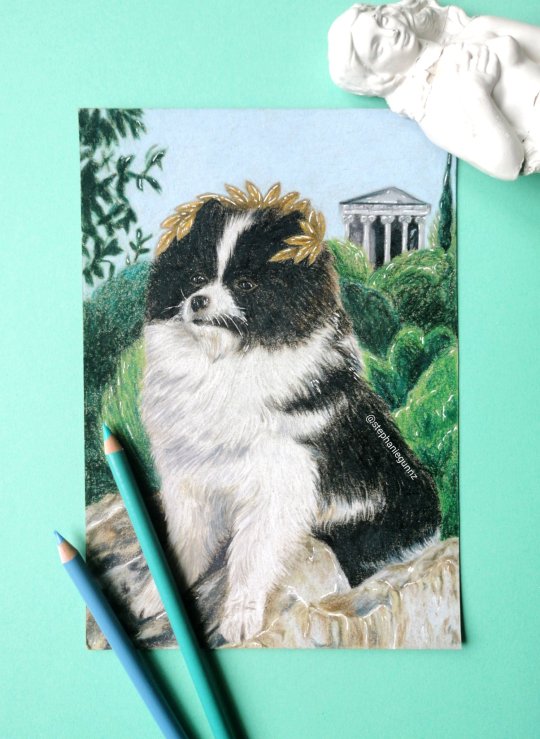
Zeus being Zeus
My art shop: https://etsy.com/shop/Bublinko
#art#drawing artwork artist#aesthetic#pet portrait#ancien greece#zeus nico hulkenberg#dog#cute#ancient greece#greek god#art commission#art seller#small bussiness#stephanie gunnz
5 notes
·
View notes
Photo

Discobolus in the field. Deutsche Fotothek
#ancien#greek#sculpture#photography#art#inspiration#black and white#statue#classics#classical art#modern art#garden
703 notes
·
View notes
Photo

Art journey Sketch of Minoan Octopus jar https://marceloterashima.myportfolio.com #illustration #art #arte #sketchbook #drawing #painting #ilustração #figuredrawing #figurativeart #digitalpainting #arthistory #ancientart #ancien #greek #greekart #instaartist #gallery #artoftheday #instaart #scenary #conceptartist #illustrationoninstagram #sketchdaily #dailydrawing #sheridanart #sheridancollege #impasto #colour (at Oakville, Ontario) https://www.instagram.com/p/CFswb6uj4Sw/?igshid=q0huiifz9ww1
#illustration#art#arte#sketchbook#drawing#painting#ilustração#figuredrawing#figurativeart#digitalpainting#arthistory#ancientart#ancien#greek#greekart#instaartist#gallery#artoftheday#instaart#scenary#conceptartist#illustrationoninstagram#sketchdaily#dailydrawing#sheridanart#sheridancollege#impasto#colour
0 notes
Text
The 1800 Fashion History
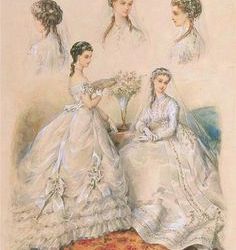
The year 1800 heralded a new century and a new world. The fashion landscape had changed radically and rapidly; the way that women dressed in 1800 stood in stark contrast to the dress of a generation earlier. The wide panniers, conical stays, and figured silks of the eighteenth century had melted into a neoclassical dress that revealed the natural body, with a high waist and lightweight draping muslins (Fig. 1). The origin of this garment was the chemise dress of the 1780s, worn by influential women such as Marie Antoinette and Georgiana, Duchess of Devonshire (Ashelford 174-175). The chemise dress, in part, reflected a neoclassicism that was beginning to emerge in fashion. Interest in classical antiquity had been growing throughout the second half of the eighteenth century, following the excavations of Pompeii and Herculaneum. Classical revivals appeared not only in fashion, but in architecture, the fine arts, and interior design (Davidson 30). However, it was the violently shifting politics at the end of the eighteenth century that spurred this style to the forefront. The French Revolution brought the old world hierarchy crashing down, forever altering dress during the 1790s. The new classical style, imitating the clothing of ancient democracies, seemed to be evidence of a political philosophy on the rise.

.By 1800, the high-waisted silhouette was the prevailing fashion across the Western world (le Bourhis 72). The most extreme manifestations of the Revolutionary classical dress, such as the dampening of gowns so that they clung to the body, were rarely seen after 1800; indeed, those radical fashions had seldom ever been seen outside of France (C.W. Cunnington 26). Still, neoclassicism continued to dominate fashionable dress (Fig. 2). Fashionable women consciously sought to reproduce the supposed fashions of Ancient Greece or Rome. Everything from the hairstyles to the draping shawls evoked antiquity; the preeminence of white as a dress color was due, in part, to the incorrect assumption drawn from classical statuary that classical women only wore white. The slim, vertical line of the garments themselves reflected the neoclassical preference for clean geometry expressed in other visual and applied arts. Fashion historian Philippe Séguy wrote that early 1800s dress “would have been at home in the days of Hadrian” (le Bourhis 73). However, neoclassicism was not the only influence on fashion during the 1800s. Notably, the campaigns of Napoleon Bonaparte brought inspiration from all over the world. For example, his occupation of Egypt popularized turbans for evening wear, and sketches of Egyptian ruins inspired palm motifs (Tortora 313; Foster 13). Towards the end of the decade, Spanish ornamentation, such as slashed sleeves, and a heavy use of fur imported from Russia, Poland, and Prussia was the result of Napoleon’s incursions in those countries (le Bourhis 108-109; C.W. Cunnington 27). Gothic ornament began to appear by 1810, and fanciful elements of pastoral dress were also seen.
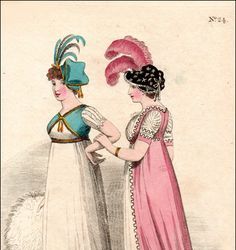
In addition to the very high waistline, directly under the bust, the signature feature of womenswear was the prominent use of fine cotton muslin; it achieved a lightness and drape that could not be accomplished with wool or silk (Byrde 23; Foster 12). The main form of dress construction was the “stomacher” or “fall front” dress. This consisted of a bodice front attached to the skirt which was partially cut in a flap; once the wearer pulled on the sleeves and fastened the inner bodice lining, the skirt flap was pulled up where it was fastened with ties around the “waist” and the bodice front was pinned into place (Johnston 166; C.W. Cunnington 31-32). Figure 3 illustrates this construction method. This type of dress was known as a “round gown.” Around 1804, some dresses were made with button fastenings up the center back of the bodice; these were referred to as frocks (Davidson 26).
Dresses saw minor changes during the 1800s, losing much of the rounded volume of the previous decade. By 1810, skirts were much straighter, and the fullness that was left in the skirt was concentrated at the back, while the front was flat, falling straight to the floor (Fig. 4). In the early years, long trains were common on fashionable gowns, for both day and evening wear, but these began to gradually disappear around 1807 (Byrde 24; Foster 21, 29). The straighter, slimmer appearance of the 1800s was also echoed in the bodice back which featured seams that created a distinctive “kite” or “diamond” shape and gave a very slim, small-backed effect. Finally, straight, narrow sleeves too reinforced the clean lines (Davidson 26; Johnston 56). Importantly, part of the neoclassical ideal was the beauty of the natural, nude body. Fashion legends abound that tell of women leaving off their stays entirely, and appearing with very little underwear at all; while it seems that some women really did abandon their stays, the practice was not widespread or mainstream. Instead, nudity was suggested in the revealing cut of dresses. Large portions of the chest and back were bared even in day dresses, sleeves were short, and draping muslin revealed the shape of the leg (Fig. 5) (C.W. Cunnington 28; Davidson 63-64; Laver 155). Of course, this new style of dress did force a change in underwear. The narrowed skirt only required a single petticoat; indeed one was necessary for modesty beneath the nearly-transparent muslin (Byrde 25). Both long and short stays were worn; the new term “corset” referred to lightly boned or even simply corded supports, and these were often worn instead of stays. The chief goal of any supportive undergarment was to raise and shape the breasts, as their natural roundness was desirable for the first time (Davidson 64). Finally, throughout the decade, the fullness in the back of the gown was supported by a bustle pad attached to the inside of the skirt (Johnston 166; C.W. Cunnington 32-33).

The neckline of dresses, for both day and night, was quite low and could be either square or V-neck. During the day, the low neckline could be filled in with a chemisette or tucker (Foster 22). In the early years, the most fashionable sleeve was short for both day and night. Later in the decade, long sleeves were also worn, and they began to gain some fullness at the sleeve head (Davidson 288-289). In the evening, there was a fashion for short overdresses or tunics which borrowed from the ancient Greek chlamys (Fig. 6). While white was considered correct for evening, the nearly transparent muslins were sometimes worn over colored silk slips, creating shimmering pastels (Fig. 4) (Byrde 25-27; C.W. Cunnington 29-30).
Textiles of the 1800s were often enriched with embroidery, one of the few elements permitted to disrupt the classical line. Whitework, colored and gilt threads, and chenille were all employed to decorate gowns with a variety of embroidered designs (Figs. 2, 7) (Johnston 146, le Bourhis 95, 104). While white was undoubtedly the most modish color for dresses, it was difficult and costly to maintain. Sturdier printed cottons and patterned silks were common for daywear, and warmer wools were acceptable in the winter months (Figs. 3, 8) (Byrde 27).
A discussion of 1800s textiles would be incomplete without mention of the resurgence of French silk. In 1804, Napoleon declared the Empire, becoming Emperor, and he revived the luxury and pomp of the ancien régime, instituting lavish court dress once again. Napoleon gave the silk industry a much-needed boost in an imperial decree that French silk be worn at formal ceremonies (Fig. 9). The imperial commissions alone saved the French fashion industry which had been decimated during the Revolution (Fukai 125; le Bourhis 84-94, 100). While Paris was the center of women’s fashion, the best cottons originated in Britain and India; Napoleon forbade the wearing of foreign cotton in order to stimulate French manufacturing. His wife, Joséphine, was the most fashionable woman of the era, the undisputed leader of la mode, and she negotiated the contradictions of a fashion that preferred simple muslin with the demands of court dress expertly (Fig. 10) (Jensen).

Outerwear and accessories were essential elements of the period, often introducing pops of color (Ashelford 178). By far, the most important accessory of the neoclassical period was the shawl, specifically Indian kashmiris/cashmere (Figs. 2, 5). Lightweight muslin gowns did not provide much protection from the cold, and shawls became a necessary accessory; not only did they provide warmth, they added to the classical draped effect. Imported Indian shawls were wildly expensive luxuries, and a favorite of Empress Joséphine (Fig. 10) (Jensen). European weavers quickly began to create cheaper imitations, most notably in Paisley, Scotland, and that city’s name would become synonymous with the pine or buta/boteh motif (Laver 155; Johnston 40; le Bourhis 77, 81). Other forms of outerwear included the pelisse (Fig. 11) and the redingote, both types of coat, and the spencer, a cropped jacket (Ashelford 179; C.W. Cunnington 34-38). Other smaller accessories also mark the era, such as swansdown boas and large fur muffs. Notably, the reticule, a small drawstring handbag, became a standard element of a woman’s outfit (Fig. 12). Reticules became essential as the era’s narrowly-cut skirts prevented the wearing of pockets beneath the dress (Byrde 25-29).
Hairdressing further underscored the classical inspiration of the era; styles were frequently given names from antiquity such à l’Agrippine and à la Phèdre (le Bourhis 80). The most extreme style was à la Titus, in which the hair was cropped short and messily tousled. More frequently, a woman’s hair was arranged in ringlets and curls, often entwined with bandeaux, ribbons, and jeweled combs (Figs. 1, 5, 10) (Tortora 317; Foster 22, 26). There was an astonishing variety of millinery. Jockey caps, lavish evening turbans, wide-brimmed bonnets, face-shielding poke bonnets, and veiled caps were all modish choices (Figs. 4, 6, 13) (C.W. Cunnington 29, 52-53).
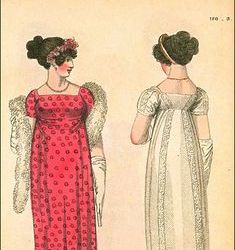
6 notes
·
View notes
Text
The Grand Master of the Hunt-Louis-Alexandre Berthier, Prince of Neufchatel, Valengin and Wagram
THE GRAND MASTER OF THE HUNT
LOUIS-ALEXANDRE BERTHIER, PRINCE OF NEUFCHATEL, VALENGIN AND WAGRAM
The son of a topographical engineer in the armies of the king, who became chief of staff of the hotels of the ministries for war, the navy and foreign affairs at Versailles under the Ancien Regine, Louis-Alexandre Berthier entered the royal school of engineering in 1794. He notably played a part in the War of American Independence between 1780 and 1783/ Distinguished among the officers faithful to the king, he was appointed chief of staff to the Versailles Garde Nationale in 1789, and thus was able to help Mesdames, Louis XVI's aunts, to flee from France in 1791. Discharge when the monarchy fell in 1792, he was reinstated three years later as brigadier-general of the Army of Italy before becoming division general. In March 1796, he met Bonaparte, who appointed him major general of the Army of Italy. It was the start of a long friendship. Berthier proved to be an excellent administrator of the armed forces of the Republic and a brave soldier on the battlefield. He soon became indispensable to Bonaparte, who was to reward him with gifts and honours: made marshal of France and minister of war with the advent of the Empire, he was appointed Grand Master of the Hunt to the Imperial Household (1804) and major general of the Grande Armee (1805), prince regent of Neufchatel and Valengin (1806), vice-constable of the Empire (1807) and prince of Wagram (1809). The most faithful of the Emperor's adherents, he followed him through all his campaigns, but in the end rallied to the Bourbon cause in 1814. Exile in Bavaria during the Hundred Days, he died on June 1, 1815. a few weeks before Waterloo, by falling from a window in his residence.
The establishment of hunting in the style of the Ancien Regime was for Napoleon a major project, part of his attempt to revive an effective and powerful court system. A department of the Hunt was set up even before the proclamation of the Empire. On being appointed Grand Master of the Hunt, Berthier was awarded the Chateau de Chambord and its immense hunting grounds. He also owned the forest of Grosbois, east of Paris.
Napoleon was a poor huntsman and a notoriously bad shot--he almost blinded Massena, one of his marshals, during a hunt in September 1808--but he was fully aware of the political role of hunting he was fully aware of the political role of hunting as an image of royal authority. Although the faithful Berthier is remembered in the history of the Empire more for his talents as a strategist and organizer of the Grande Armee than for his part in imperial hints, the decision to appoint him chief huntsman was not taken haphazardly. He was in fact the son of a topographical engineer attached to the government under Louis XV and Louis XVI, Jean-Baptiste Berthier, who in 1767 had been ordered to draw up a complete map of the royal hunting grounds. The project was not actually launched until 1774, and the map was only completed just before the Revolution in 1789. In his youth, the future prince of Neufchatel had assisted his father and often accompanied the hunts of Louis XVI to confirm the topographical data. Thus, like Segur, the Grand Master of Ceremonies, or Talleyrand, the Grand Chamberlain, Berthier was appointed Grand Master of the Hunt a direct reference to past customs.
The portrait of the Master of the Hunt by Pajou was commissioned for the Gallery of the Grand Officers at Fontainebleau in 1806 and delivered in 1808, and eventually, like the others, installed in Compiegne the following year. Pajou portrays the prince in his Civil Grand Officer costume, which features the details of the embroidered palm leaves, oak leaves and laurel leaves in the regulation green colour of the Master of the Hunt. The jacket survives and is preserved in the Musee de l'Armee in Paris. Although majestic, this is a very conventional portrait. He is shown as a grand butler depicted in the exercise of his function in the tradition of ministerial portraits: standing beside his work table, he is pointing to a document relevant to his post: here it happens to be a map of the imperial forest of Fontainebleau. In the background, a copy of the ancient Greek statue of Artemis the Huntress-also called the Diana of Versailles--symbolizes his position, and laurel crowned bust of Napoleon, after the Bartolini, evokes his allegiance to the Emperor.
A second portrait of Berthier in formal dress a half-length likeness, is in the Chateau de Fontainebleau. It is attrivuted to Appiani, and datable after 1807.
SYLVAIN CORDIER
Napoleon, The Imperial Household, Sylvain Cordier, Montreal Museum of the Arts, page 57
Portrait by Jacques-Augustin-Catherine Pajou

Portrait by Andrea Appiani
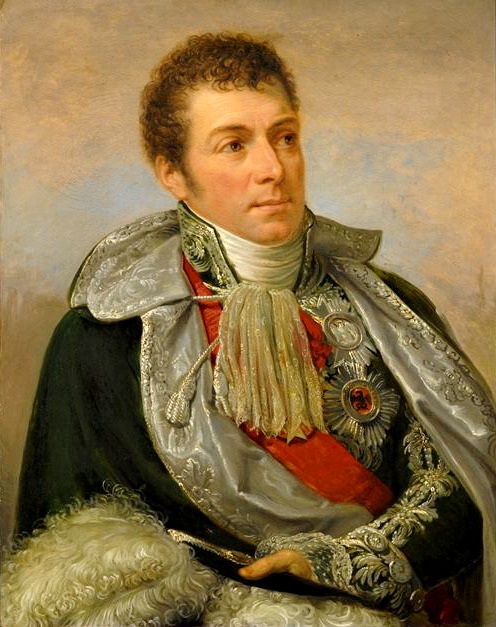
Berthier’s hunting coat from the Musee de l’Armee, Paris:

#napoleon#bonaparte#Napoleon Bonaparte#Emperor Napoleon#Emperor Napoleon I#Emperor Napoleon Ier#Napoleon I#Napoleon Ier#Berthier#Louis Alexandre Berthier#Alexandre Berthier#Marshal Berthier#Master of the Hunt#Imperial Household#Sylvain Cordier#Montreal Museum of Art#book excerpt#excerpt#real history#real people#yay Berthier
28 notes
·
View notes
Text
A personal update (and about future updates/posts):
I graduated French highschool and am now a student. Instead of going to university, I'm going to start what's called "Preparatory Class of Grandes Écoles" (or CPGE).
In France, university is free and according of what I heard, often less competitive (and prestigious) than British and American colleges. That's why we have "Grandes Écoles" (which are, according to WordReference : "extremely selective higher education establishments which admit students on the basis of competitive exams"). In order to prepare those exams, the students join a CPGE (we cannot enter Grandes Écoles without).
This path is pretty known as an ordeal for students, who suffer work intensively during 2 years. It's quite selective and we are supposed to learn very specific and complex things in a lot of domains, to eventually pass exams and hope to be accepted in a Grande École. (*)
That’s why I might no be able to update this blog as often as I want - not enough time, unfortunately. However, I will definitely continue to post things every now and then (I want to post that bloody dissertation about Albus' Boggart, even CPGE can't stop me).
That's all :)

(A summary of CPGE, indeed)
(*) about CPGE and my studies:
There are several pathways: a CPGE might prepare to prestigious engineering studies, scientific research, well-known buisness or communication schools...
But there also Grandes Écoles asking for literature, philosophy, art, history studies (ENS, École du Louvre...) - and thus CPGE which are arts courses. That's my path!
I'm starting what's called a "hypokhâgne", a CPGE, and will study quite an amount of very specific things about French literature, philosophy, history, foreign languages (English and German), ancien Latin (and maybe ancient Greek), arts' history and theory, and geography. And I still don't know what I want to do after, but hopefully, I will find. I also moved in the very heart of Paris.
(I'm already late and didn't read all I was supposed to, honestly. Though I had the pleasure to discover that our first English text is rather understandable - no need to mention that's essentially thanks the fanfics I read during last months. At least, all the nights I spent on AO3 - or writing analysis on Tumblr - have been suprisingly useful. And maybe this year, I will actually learn how to correctly speak in English - and stop doing dumb mistakes. I hope so.)
1 note
·
View note
Text
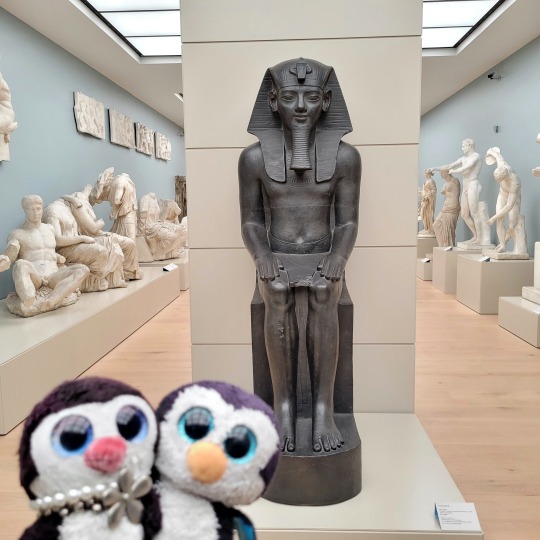
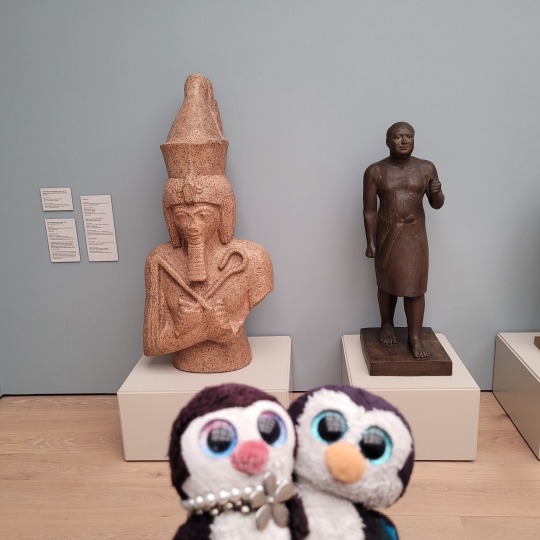




2022/08/09
Seguimos en el área del arte antiguo, admirando la esculturas expuestas, no tanto porque fueran originales o réplicas, sino por la belleza de estas obras pensadas y hechas con muchos menos medios técnicos de los que tenenos ahora.
We continue in the area of ancient art, admiring the exhibited sculptures, not so much because they were originals or replicas, but because of the beauty of these works designed and made with much less technical means than we have now.
Google Translation into Portuguese:
Continuamos na área da arte antiga, admirando as esculturas expostas, não tanto por serem originais ou réplicas, mas pela beleza destas obras desenhadas e feitas com muito menos meios técnicos do que temos agora.
Google translation into Italian:
Continuiamo nell'area dell'arte antica, ammirando le sculture esposte, non tanto perché originali o repliche, ma per la bellezza di queste opere progettate e realizzate con mezzi molto meno tecnici di quelli che abbiamo ora.
Google Translation into French:
Nous continuons dans le domaine de l'art ancien, en admirant les sculptures exposées, non pas tant parce qu'il s'agissait d'originaux ou de répliques, mais à cause de la beauté de ces œuvres conçues et réalisées avec des moyens beaucoup moins techniques que ceux dont nous disposons actuellement.
Google Translation into Arabic:
نستمر في مجال الفن القديم ، ونعجب بالمنحوتات المعروضة ، ليس بسبب كونها أصلية أو نسخ طبق الأصل ، ولكن بسبب جمال هذه الأعمال المصممة والمصنوعة بوسائل عديدة ؛ أقل تقنية من تلك التي لدينا حاليًا.
Google Translation into German:
Wir bleiben im Bereich der antiken Kunst und bewundern die ausgestellten Skulpturen nicht so sehr, weil sie Originale oder Repliken waren, sondern wegen der Schönheit dieser Werke, die mit vielen Mitteln entworfen und hergestellt wurden, weniger technisch als die, die wir derzeit haben.
Google Translation into Albanisch:
Duke qëndruar në fushën e artit antik, ne i admirojmë skulpturat e ekspozuara jo aq për shkak se ishin origjinale apo kopje, por për shkak të bukurisë së këtyre veprave, të projektuara dhe të realizuara me shumë mjete, më pak teknike se ato që kemi aktualisht.
Google Translation into Bulgarian:
Оставайки в областта на древното изкуство, ние се възхищаваме на изложените скулптури не толкова защото са били оригинали или реплики, а поради красотата на тези произведения, проектирани и направени с много средства, по-малко технически от тези, които имаме в момента.
Google Translation into Czech:
Zůstaneme-li v oblasti starověkého umění, obdivujeme vystavené sochy ani ne tak proto, že by to byly originály nebo repliky, ale kvůli kráse těchto děl, navržených a vyrobených mnoha prostředky, méně technickými, než jaké máme v současnosti.
Google Translation into Slovak:
Zostávame v oblasti antického umenia a obdivujeme vystavené sochy ani nie tak preto, že by to boli originály alebo repliky, ale pre krásu týchto diel, navrhnutých a vyrobených mnohými prostriedkami, menej technickými ako tie, ktoré máme v súčasnosti.
Google Translation into Suomi:
Muinaisen taiteen alalla pysyen ihailemme esillä olevia veistoksia ei niinkään siksi, että ne olisivat alkuperäisiä tai jäljennöksiä, vaan näiden teosten kauneuden vuoksi, jotka on suunniteltu ja valmistettu monin keinoin, vähemmän teknisillä kuin nykyiset.
Google Translation into Greek:
Παραμένοντας στον τομέα της αρχαίας τέχνης, θαυμάζουμε τα γλυπτά που εκτίθενται όχι τόσο επειδή ήταν πρωτότυπα ή αντίγραφα, αλλά λόγω της ομορφιάς αυτών των έργων, σχεδιασμένων και κατασκευασμένων με πολλά μέσα, λιγότερο τεχνικά από αυτά που έχουμε σήμερα.
Google Translation into Norwegian:
Når vi holder oss i feltet for gammel kunst, beundrer vi skulpturene som vises, ikke så mye fordi de var originaler eller kopier, men på grunn av skjønnheten til disse verkene, designet og laget med mange midler, mindre tekniske enn de vi har for øyeblikket.
Google Translation into Polish:
Pozostając na polu sztuki antycznej, podziwiamy eksponowane rzeźby nie tyle dlatego, że były oryginałami czy replikami, ale ze względu na piękno tych dzieł, zaprojektowanych i wykonanych wieloma środkami, mniej technicznymi niż te, którymi dysponujemy obecnie.
Google Translation into Romanian:
Rămânând în domeniul artei antice, admirăm sculpturile expuse nu atât pentru că erau originale sau replici, cât datorită frumuseții acestor lucrări, concepute și realizate cu multe mijloace, mai puțin tehnice decât cele pe care le avem în prezent.
Google Translation into Russian:
Оставаясь в области древнего искусства, мы восхищаемся выставленными скульптурами не столько потому, что они были оригиналами или копиями, сколько из-за красоты этих произведений, спроектированных и выполненных с использованием многих средств, менее технических, чем те, которые мы имеем в настоящее время.
Google Translation into Turkish:
Antik sanat alanında kalarak, sergilenen heykellere orijinal veya kopya oldukları için değil, şu anda sahip olduğumuzdan daha az teknik olan birçok yolla tasarlanmış ve yapılmış bu eserlerin güzelliği nedeniyle hayran kalıyoruz.
Google Translation into Hebrew:
בהישארותנו בתחום האמנות העתיקה, אנו מתפעלים מהפסלים המוצגים לא כל כך בגלל שהם היו מקוריים או העתקים, אלא בגלל היופי של העבודות הללו, שעוצבו ויוצרו באמצעים רבים, פחות טכניים מאלה שיש לנו כיום.
Google Translation into Hindi:
प्राचीन कला के क्षेत्र में रहते हुए, हम प्रदर्शन पर मूर्तियों की इतनी प्रशंसा नहीं करते हैं क्योंकि वे मूल या प्रतिकृतियां थीं, लेकिन इन कार्यों की सुंदरता के कारण, कई तरीकों से डिजाइन और बनाई गई, जो वर्तमान में हमारे पास कम तकनीकी हैं।
Google Translation into Indonesian:
Tetap di bidang seni kuno, kami mengagumi patung-patung yang dipamerkan bukan karena asli atau replika, tetapi karena keindahan karya-karya ini, dirancang dan dibuat dengan banyak cara, kurang teknis daripada yang kami miliki saat ini.
Google Translation into Malay:
Berkekalan dalam bidang seni purba, kami mengagumi arca yang dipamerkan bukan kerana ia asli atau replika, tetapi kerana keindahan karya ini, direka dan dibuat dengan pelbagai cara, kurang teknikal daripada yang kami miliki sekarang.
Google Translation into Japanese:
古代芸術の分野にとどまり、展示されている彫刻を賞賛するのは、それらがオリジナルまたはレプリカであるという理由ではなく、多くの手段で設計および作成されたこれらの作品の美しさであり、現在のものよりも技術的ではありません.
Google Translation into Korean:
고대 미술의 영역에 머물면서 우리는 전시된 조각품에 감탄하기 보다는 원본이나 복제품이 아니라 현재 우리가 가지고 있는 것보다 덜 기술적이고 많은 방법으로 설계되고 만들어진 이러한 작품의 아름다움 때문에 감탄합니다.
Google Translation into Chinese:
停留在古代艺术领域,我们欣赏展出的雕塑,与其说是原件或复制品,不如说是因为这些作品的美丽,设计和制作的手段很多,技术含量比我们现在的要少。
Google Translation into Persian:
با ماندن در عرصه هنر باستان، مجسمه های به نمایش گذاشته شده را نه به دلیل اصلی بودن یا کپی بودنشان، بلکه به دلیل زیبایی این آثار که با ابزارهای بسیار طراحی و ساخته شده اند، کمتر از آنچه که در حال حاضر داریم، تحسین می کنیم.
Google Translation into Tagalog:
Sa pananatili sa larangan ng sinaunang sining, hinahangaan namin ang mga eskultura na naka-display hindi dahil sa mga orihinal o replika ang mga ito, ngunit dahil sa kagandahan ng mga gawang ito, dinisenyo at ginawa sa maraming paraan, hindi gaanong teknikal kaysa sa kasalukuyang mayroon kami.
Google Translation into Thai:
เราชื่นชมงานประติมากรรม��ี่จัดแสดงอยู่ไม่มากนักเนื่องจากเป็นงานต้นฉบับหรือแบบจำลอง แต่เนื่องจากความสวยงามของงานเหล่านี้ ออกแบบและสร้างขึ้นด้วยวิธีการต่างๆ มากมาย เทคนิคน้อยกว่างานที่เรามีอยู่ในปัจจุบัน
Google Translation into Bengali:
প্রাচীন শিল্পের ক্ষেত্রে থাকা, আমরা প্রদর্শিত ভাস্কর্যগুলিকে এতটা প্রশংসা করি কারণ সেগুলি আসল বা প্রতিলিপি ছিল না, তবে এই কাজের সৌন্দর্যের কারণে, ডিজাইন করা এবং অনেক উপায়ে তৈরি করা হয়েছে, আমাদের বর্তমানে যেগুলি আছে তার চেয়ে কম প্রযুক্তিগত।
Google Translation into Ukrainian:
Залишаючись у сфері стародавнього мистецтва, ми захоплюємось скульптурами, які виставлені, не стільки тому, що вони були оригіналами чи копіями, скільки через красу цих творів, розроблених і виготовлених багатьма засобами, менш технічними, ніж ті, які ми маємо зараз.
#Oslo#Noruega#Norway#Downtown#AkerBrygge#National#Museum#NasjonalMuseet#Antique#Wonder#Art#Travel#Beauty#CoupleGoals#PositiveVibes#PlushiesOfInstagram#Maharashtra#ペンギン
4 notes
·
View notes
Photo
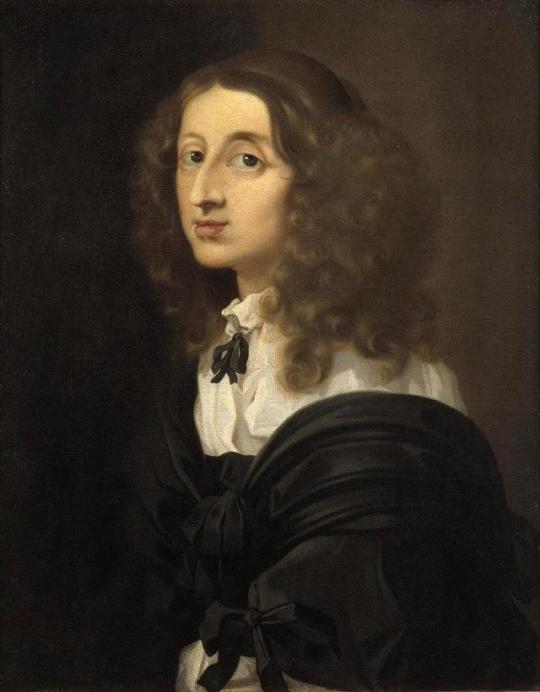
MWW Artwork of the Day (10/12/17)
Sébastien Bourdon (French, 1616-1671)
Queen Christina of Sweden (c. 1652-53)
Oil on canvas, 72 x 58 cm.
Nationalmuseum, Stockholm
OK, she was no Garbo, but few would dispute the claim that she was the most intriguing woman of her century and the most interesting of all female monarchs. At her birth she screamed with such "a strong, hoarse voice" that the midwife announced her as a boy. Her mother was greatly disappointed to discover her real sex; but her father, Gustavus II Adolphus, was thrilled and exclaimed "She'll be clever, she has made fools of us all!". Gustavus went off to fight for Protestantism in the Thirty Year's Wars of Religion, and got himself killed. So, on March 15, 1633 the six-year-old lass became Sweden's Queen, their "Girl King." While her regent, Chancellor Axel Oxenstierna, ruled the land, the young monarch received an education equal to or superior to any male of her generation. An apt pupil of high intelligence, by her teens she had mastered six modern languages, as well as Latin and Greek. Her intellectual interests were not only unique for the women of her era, but also for the monarchs. She studied Neostoicism, the Church Fathers, even Islam, and had a firm grasp of classical history and philosophy. She collected art, had theaters built for drama and ballet, subsidized the first Swedish-language plays, and even acted in them to good reviews. She invited the great Dutch jurist Hugo Grotius to be her librarian. She corresponded with Descartes on the subject of hate and love, then invited him to Sweden to tutor her on philosophy and religion. (The lessons didn't turn out so well for Descartes, who arrived in the winter 1649, went to the unheated castle library every morning at five to instruct his royal pupil, and came down quickly with a fatal case of pneumonia.) Distraught with guilt over the great philosopher's death, Christina embraced skepticism and become temporarily disillusioned with religion.
As a ruler, she was headstrong and not afraid of bucking the powers-that-be. Bucking her Chancellor Oxenstierna, she pushed for a peace that would end the Thirty Year's War, even if it would favor the Catholic rather the Protestant cause. A moderate when it came to religion, she blocked radical reforms to Lutheranism that would have rendered it more extreme and intolerant. She "spread the wealth" by ennobling 500 commoners and paying for it with a tax on the nobility. Her personal life was no less radical for her times. A workaholic chiefly occupied with her studies, she showed up for ministerial meetings in men's shoes and unkempt hair. She was rumored to be having an affair with her lady-in-waiting and intimate companion, the Countess Ebba Sparre. Confessing to "an insurmountable distaste for marriage" in her diary, she resisted all pleas that she provide Sweden with a heir to the throne, opting instead to appoint her cousin Charles Gustavus as her successor.
Bourdon is one of the many artists included in the MWW exhibit/gallery:
* Ancien Régime I - The Age of Louis XIV
19 notes
·
View notes
Photo
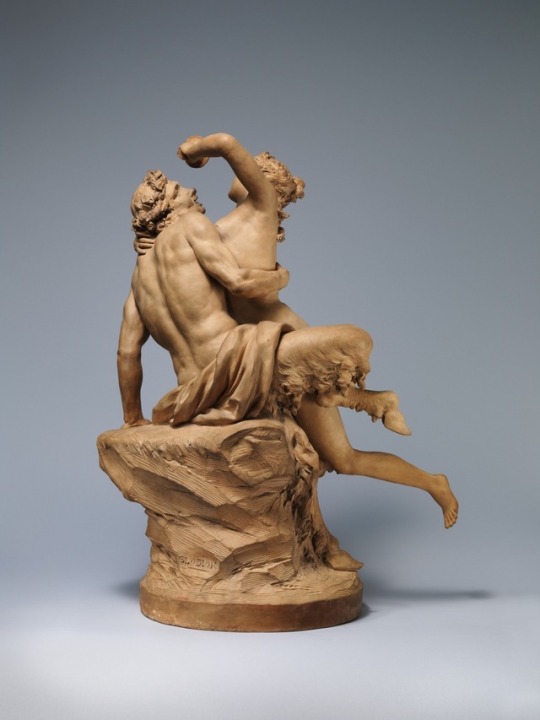
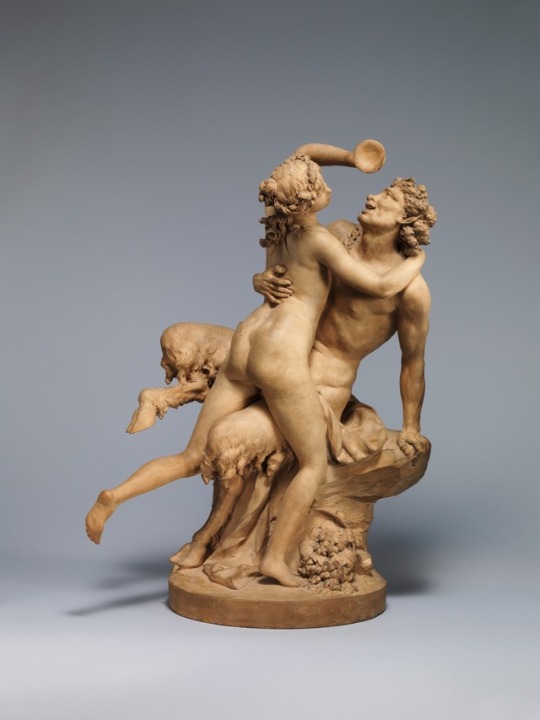


The Intoxication of Wine Artist: Clodion (Claude Michel) (French,1738–1814) Clodion was deeply steeped in the imagery of Greek and Roman art. Clodion, whose career spanned the last decades of the ancien régime through the French Revolution and Napoleon's reign.
2 notes
·
View notes
Text
50 MOST SCARCE, RARE & OLD BOOKS ON MAGIC, CONJURING, WITCHCRAFT & OCCULT ON DVD
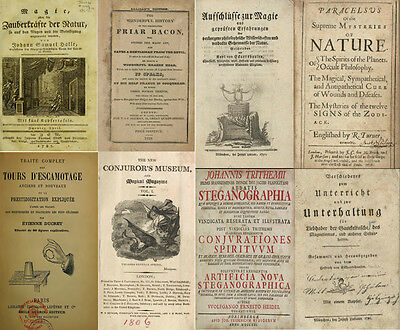
THE MOST SCARCE, RARE & OLD MAGIC, CONJURING, ILLUSIONS, WITCHCRAFT, OCCULT & MUCH MUCH MORE BOOKS COLLECTIONOn eBAY On DVD It is nearly impossible to find all these rare & old books in their original form and if found they would cost a fortune! ____________________ Great Collection Of Rare & Old MAGIC, CONJURING, ILLUSIONS, WITCHCRAFT, OCCULT & MUCH MUCH MORE Great Reference Books. 50 Books in Total Contains thousands & thousands of pages of great Information about MAGIC, CONJURING, ILLUSIONS, WITCHCRAFT, OCCULT & MUCH MUCH MORE. Many Information & Secrets Exposed Lots of Beautiful Illustrations. This DVD Contains the most comprehensive collection of Rare & Old Books on MAGIC, CONJURING, ILLUSIONS, WITCHCRAFT, OCCULT & MOREon eBay. Many of these Rare books date back to the 1500s and early 1900s and all of their content is just as impressive today as it was then. All these Original Rare and Old Books have been professionally scanned in high quality, compiled and preserved forever in PDF format files on DVD data disc for your enjoyment You can READ, TRANSFER, COPY, CUT, PASTE, SAVE & ZOOM IN on any text, diagrams or illustrations. The pictures you see in this auction were taken from these PDF files These books can be read on your computer, laptop, tablet, smartphone, Kindle, ebook reader but will not work on regular DVD Players ***************************** The Complete List of The Books Titles1) Aufschlüsse zur Magie aus geprüften Erfahrungen über verborgene philosophische, by Eckartshausen, Karl von, (1804)2) Codicile de Jérome Sharp, professeur de physique amusante; où l’on trouve, by Decremps, Henri, (1791)3) Confidences et révélations - comment on devient sorcier, by Robert-Houdin, Jean-Eugène, (1868) 4) De Occulta philosophia. by Von Nettesheim, Agrippa. Heinrich Cornelius, (1533)5) Die Natürliche Magie, by Wiegleb, Johann Christian, (1789) 6) Het Verbeetert En Vermeerdert Natuurlyk Toverboek of Speel - Toneel Der Konsten, by Simon Witgeest & Gysbert de Groot, (1739) 7) La Magie Blanche Dévoilée, ou Explication des Tours Surprennants. by Decremps, Henri (1784) 8) Le magicien des salons, ou, Le diable couleur de rose, by Delion, M. (1873) 9) Les Nouveaux savans de soci��té, Volume 1, by M. Ducoeurjoly, (1808) 10) Les Nouveaux savans de société, Volume 2, by M. Ducoeurjoly, (1808) 11) L'escamoteur habile, by F Gallien (1816) 12) Magic and fetishism, by Haddon, Alfred Cort, (1906) 13) Magic, pretended miracles, and remarkable natural phenomena, by American Sunday School Union, (1855) 14) Magie oder Die Zauberkräfte der Natur so auf den Nutzen und die Belustigung angewandt worden, by Johann Samuel Halle, (1785) 15) Magische Werke - Sammt den Geheimnitzvollen Schriften des Petrus von Abano, by Agrippa. Heinrich Cornelius, (1855) 16) Mémoires Récréatifs, Scientifiques et anecdotiques du physicien-aéronaute, by Etienne Gaspard Robertson, (1831) 17) Moderne Wunder, by Willmann, Carl, (1897)18) Natural Magic, or, Physical Amusements Revealed, by Astley, Philip (1785) 19) Natural Magick, by Giambattista della Porta, (1658) 20) Natürliche Magie, by Funk, Christlieb Benedict, (1783) 21) Neue Physikalische und Mathematische Belustigungen, by Guyot, (1772) 22) Neuer Wunder-Schauplatz der Künste und interessantesten Erscheinungen der Magie, by Johann Heinrich Moritz Von Poppe, (1839) 23) Nouvelle Magie Blanche Dévoilée, by Jean-Nicolas Ponsin, (1853) 24) Novo Manual Do Prestigiador Ou Livro De Sortes Divertidas, By Lisboa (1870)25) Oblako nad sviatilishchem, ili, Niechto takoe, o chem gordaia filosofiia i grezit ne smieet, by Eckartshausen, Karl von, (1804)26) Oder die Enthullten Zauberkräfte, Sammlung Auseriesener Leicht Zuführender Magischer, by Altona Bei Gottfried Vollmer, (1800)27) Paracelsvs of the Supreme Mysteries of Nature, by Paracelsus, (1656)28) Physical Amusements and Diverting Experiments, by Pinetti, Giuseppe, (1784)29) Popular Recreator - Volume 1 & 2 - By London Paris New York Cassell, Petter & Galpin, (1873)30) Rational Recreations - Volume 1, by Hooper, William, M.D., (1782)31) Rational Recreations - Volume 2, by Hooper, William, M.D., (1782)32) Rational Recreations - Volume 3, by Hooper, William, M.D., (1782)33) Rational Recreations - Volume 4, by Hooper, William, M.D., (1782)34) Steganographia Qvæ Hvcvsqve a Nemine Intellecta, Sed Passim vt Svpposititia, Perniciosa, by Trithemius, Johannes, (1721)35) Supplément a La magie Blanche Dévoilée. by Decremps, Henri, (1784)36) Testament de Jérôme Sharp, professeur de physique amusante. A Paris Chez l’auteur, by Decremps, Henri, (1786)37) The Art of Conjuring Made Easy, by Crawhall, Joseph (1865)38) The Conjurer Unmasked, by Denton, (1790)39) The Expert at the Card Table - a Treatise on the Science and Art of Manipulating Cards, by Erdnase, S. W. (1905)40) The Humorous Magician Unmasked, by Engstrom, A. B. (1836)41) The New Conjuror’s Museum and Magical Magazine. London (1806)42) The Pneumatics of Hero of Alexandria, from the Original Greek, by Bennet Woodcroft. London, Taylor, Walton and Maberly, (1851)43) The Secret and Swift Messenger, How a Man May with Privacy and Speed Communicate His Thoughts, by Wilkins, John, (1694)44) The Secretes of the Reverende Mayster Alexis of Piemount, A Anvers, Impr. de C. Plantin, by Ruscelli, Girolamo, (1564)45) The Vanity of Arts and Sciences, by Agrippa, Heinrich Cornelius (1694)46) The Wonderful History of the Celebrated Friar Bacon who studies the magic, by T. & J. Allman (1829)47) Traité complet des tours d'escamotage anciens et nouveaux, by Ducret, Etienne (1885)48) Trewey premier shadowgraphiste mime & comedien, by Colombon, Henri., (1909)49) Ventriloquism Explained and Juggler’s Tricks, or Legerdemain Exposed. by Amherst, Ms, J. S. and C. Adams (1834)50) Verschiedenes zum Unterricht und zur Unterhaltung fuür Liebhaber der Gauckeltasche, by Eckartshausen, Karl von, (1791)*********************************Please make sure to check our other Rare eBooks collections listings Each collection is unique and take advantage of our Multiple Purchase Discounts Multiple Purchase DiscountsIf you purchase 3 of our rare book collections you will automatically qualify for a free collection of your choice. Please use the eBay messaging service to let us know which collection you’d like totally free of charge! Payment Policy Only PayPal is AcceptedImmediate Payment is required after the Winning BidItem will be shipped on the same or next business day of receiving full payment Shipping Policy All items are posted Priority MailPlease allow up to 14 days for International ShippingPaypal Confirmed Addresses OnlyItems that are received damaged or faulty must be reported within 24 hours of receiving the itemReturns & Exchange PolicyDue to the nature of the item being a DVD and it can be copied, there is no return on this item, but if the item is faulty please contact US via eBay's messaging service for the returns address. The item must be returned within 14 days and once received, a replacement will be shipped to you. We suggest returning items via Trackable Delivery Service. Terms & Conditions Please Note: In order to keep prices low for our customers, These ebooks are supplied on unmarked DVDs (no labels) and presented in a white or clear DVD sleeve for protection. The Content of this DVD has been collected and compiled by US. Reproduction and sale of this DVD data disc is STRICTLY PROHIBITED!
Read the full article
0 notes
Text
Aperçues

Aperçues
Eglantine Chaumont - Annick Lizein
L'observateur (…) est un moi insatiable du non-moi
qui à chaque instant,
le rend et l'exprime en images plus vivantes que la vie elle-même,
toujours instable et fugitive.
Charles Baudelaire, Le peintre de la vie moderne, 1863
FR
«Choses vues, non, pas même vues jusqu’au bout. Choses simplement entrevues (…) Créatures ou simples formes qui surgissent ou qui tombent.» Aperçues donc. Comme le titre d'un récent recueil de Georges Didi-Huberman; point d'approche à défaut de point d'accroche de cette exposition.
Une affaire de regard. Annick Lizein et Eglantine Chaumont ont perçu immédiatement le Penthouse Art Residency comme un lieu propice à pointer le regard dans plusieurs directions. Point d'observation de trajectoires fugitives, belvédère ouvert à des horizons multiples, le lieu renferme également une histoire passée qui affleure à certains endroits pour qui sait être attentif aux couches de sédiments mémoriels qui s'y accumulent, réels ou rêvés. A cet égard, les sujets des peintures d'Annick Lizein sont issus d’un registre fantasmé où seuls certains signes ont résisté à la représentation, exprimant la persistance de la mémoire. Or, "fantasme" vient du grec ancien "phasma" qui peut se traduire par forme, apparition, fantôme. Visions en bribes de choses, de formes ou d'êtres qui, à peine apparus, disparaissent déjà, laissant dans leur sillage la traine d'une question, d'une mémoire ou d'un désir. Image-sillage. Persistances lumineuses comme les queues des comètes.
Une affaire de spectres. "Spectrum" en latin désigne l'image projetée, le simulacre émis par les objets qui renvoie à notre propre regard. «Rendre raison des fantômes c'est notamment rendre raison du regard de celui qui les voit, ou qui ne les voit pas» note Marie Capel. «Ce que nous voyons et ce qui nous regarde» (Georges Didi-Huberman) s'insère dans des jeux de miroir et de déplacements où la répétition du semblable provoque un sentiment d' "inquiétante étrangeté" (suivant le concept freudien). Cette traversée, cette exploration à bas bruit est une réflexion sur notre présence. Comme ces objets autonomes dont le corps, progressivement, s'absente. Comme ces reflets réels qui viennent se superposer à un reflet différé. Des œuvres qui présentent une dimension temporelle, un caractère éphémère et fugitif et qui relèvent également de la volonté d'Eglantine Chaumont de troubler la perception de l'espace.
Les Aperçues sont une sorte d'appel, des «réénonciations vives» selon l'expression de Serge Martin; un «moment de la fêlure et du cri entendu» comme dirait Bataille. Un moment autant qu'un mouvement ouvert aux transparences, aux contaminations et aux déchirures. Des spectres titubants qui se jouent de la figuration et de l’abstraction. Comme ces grands formats d'Annick Lizein où la couleur et le geste se confondent et qui font remonter tout à coup les «vieilles images», chères à Beckett, que la lumière saisit à l’improviste.
Gatien Du Bois, curateur
Vernissage: 23 février 2019, entre 15h et 20h
Exposition visible le dimanche 24/02/19 et le weekend du 02-03/03/19, de 15h à 18h, et sur rendez-vous jusqu'au 03/03/19
¨¨¨¨
EN
"Things seen, actually not even seen to the end. Things simply glimpsed (...) Creatures or simple forms that have arisen or fallen." Aperçues is the word in Fench. Like the title of a recent book by Georges Didi-Huberman as an onset, in default of a fixing point for this exhibition.
A matter of looking. Annick Lizein and Eglantine Chaumont immediately perceived the Penthouse Art Residency as a place to look in several directions. Point of observation for fugitive trajectories, belvedere open to multiple horizons, the place also encloses a past history which is outcropping in certain rooms for who knows to be aware of the layers of memory sediments which pile up there, real or dreamed. In this respect, the subjects of Annick Lizein's paintings come from a fantasy range where only certain signs resisted the representation, expressing the persistence of memory. However, "fantasy" comes from the ancient Greek "phasma" which can be translated by form, appearance or ghost. Snippets of things seen, shapes or beings that, just as they appeared, disappear already, leaving in their wake the trail of a question, a memory or a desire. Image-aftermath. Luminous persistence like comets tails.
A matter of spectres. "Spectrum" in Latin refers to the projected image, the simulacrum emitted by objects, which refers at the end to our own eyes. "To give reason to ghosts is, among other things, to acknowledge the eye of the person who sees them or doesn't", says Marie Capel. "What we see and what looks back at us" (Georges Didi-Huberman) fits into mirror games and displacements where the repetition of the like causes a feeling of the "uncanny" (following the Freudian concept). This traverse, this humble and quiet exploration is a reflection on our presence. Like these autonomous objects whose body is, progressively, absent. Like these real reflections that come to be superimposed on a deferred one. Works that have a temporal dimension, an ephemeral and fugitive specificity and that are also part of Eglantine Chaumont's desire to disturb the perception of space.
The Aperçues are a kind of call, "lively re-utterances" according to Serge Martin; a "moment of crack and cry heard" as Bataille would say. A moment as much as a movement open to transparencies, contaminations and splits. Lurching spectres that play with figuration and abstraction. Like Annick Lizein's large formats where colour and gesture merge, bringing suddenly to the surface the "old images" dear to Beckett, seized by the light unexpectedly.
Gatien Du Bois, curator
Opening: 23rd of February 2019, from 3-8 PM
Exhibition visible on Sunday 24/02/19 and on 02-03/03/19, from 3-6 PM, and by appointment until 03/03/19

#artexhibition#art#contemporaryart#eglantinechaumont annicklizein gatiendubois harlanleveyprojects nhbrusselsbloom#vedett
0 notes
